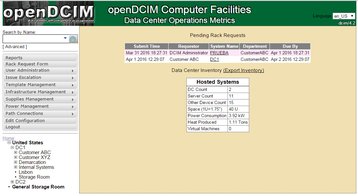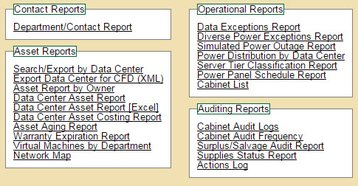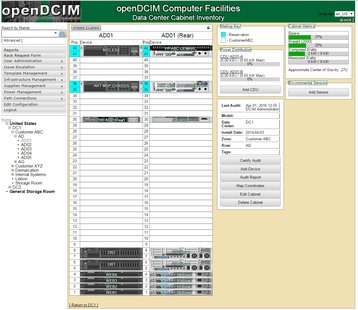When you talk to data center operators and system vendors about data center infrastructure management (DCIM) you will get a wide variety of responses. Even half a decade or so after the first products that started to define this niche began to appear there is still a fairly broad definition of what products and technologies belong in this market segment - and even an on-going argument whether it is a separate segment or simply a description of technologies and techniques that fit more traditional management models, highlighted for the data center.
Whether DCIM is its own category or simply a service that should be provided via facilities management and IT management software remains to be seen, and will likely be driven by market forces, as evidenced by the acquisition of DCIM point solution providers by larger scale management software ISVs. However, given the broad scale of data centers in use and development, small point solution products touting DCIM capabilities will likely be with us for the foreseeable future.
Kill the spreadsheets!
Like just about every other aspect of the data center these days, there is an open source DCIM version available to administrators; openDCIM. Unlike many open source projects however, the goal of openDCIM is not to compete with full blown data center management tools, but to provide basic DCIM services as well as a starting point for DCIM users and developers willing to work under open source licensing. In the words of the original developer, the goal is “to eliminate the excuse for anybody to ever track their data center inventory using a spreadsheet or word processing document again.”
Launched four years ago as an open source project under the GPL v3 license, by Scott Milliken, computer facility manager at the Oak Ridge National Laboratory, the project was based on software he began developing as the data center manager for Vanderbilt University. The software came into being to begin to meet his needs in organizing the ownership and operational trail for the hardware under his care in the data center. Milliken had experience developing applications for logistics and inventory prior to his move to the data center; experience which was of definite value in looking at DCIM.
Open DCIM is not designed to be competitive with commercial products. Its biggest advantage is that it is effectively free for use. For data centers of almost any size the tool is an effective introduction to DCIM concepts and allows the administrator top evaluate the utility of DCIM software in their own environment.
Enough for small sites?
While small data centers may need nothing more than openDCIM, large facilities can determine the value of the tools and technology and use that information when considering larger enterprise management packages for their facility. But choosing to use openDCIM also means that your DCIM goals are narrowly targeted; that you are choosing not to look at packages that are subsets of large scale enterprise management tools or looking at DCIM as a component of facilities management. That’s not to say that at some point in the future it would not make sense for your enterprise to combine DCIM responsibilities as part of larger scale management tools, it just means that for now, your DCIM goals are limited in scope and focused on the subset of overall capabilities that openDCIM can deliver.
Like any package of this nature, the goal of openDCIM is to allow the administrator to keep track of what is going on in the data center. In this case, what equipment is where, and who is responsible for it. Also, what is the status, across many different aspects, of the equipment installed in the data center being managed. Regardless of the size of your data center, getting control of the organization requires basic asset management. The data center operator needs to know what equipment is installed in their racks. The larger the data center, the more complex this operation becomes, but once the operator has a current complete physical inventory, updating that asset management information can become a standard part of commissioning and decommissioning equipment in the managed data center.
Don’t forget that the actual data center layout is not the first step in a strong DCIM system. One of the most important tasks is being able to assign equipment to its owners in the corporate data center. This allows resource usage to be assigned on a departmental basis, to track usage of equipment, and fundamentally to identify who is responsible for the equipment that is occupying the data center. In order to do so it’s necessary to have a the potential departments and responsible parties identified and to have contact information available with the management system so that resources and equipment can be appropriately assigned.
With an asset inventory in place which gives the manager an idea of how much of the available rack space is in use, the operator can begin to address the other two key aspects of DCIM: power and cooling. openDCIM allows the user to map overlays for power, space, temperature and weight capacity; detailed information on the requirements for each rack, cabinet, and device being managed. While the tool supports details down to the level of each device most users will likely associate devise with locations; racks, cabinets, etc. The software allows the user to supply their own floor plan map to use as the basis for the layout of the data center.
Populating the map to represent the data center assets down to the power strip level or running a cron job to identify every VMware virtual machine and creating logical definition for the map can allow the user to handle data centers of almost any size, from concatenating multiple small server rooms or closets into a single conceptual map giving a view to all of the small spaces on a single screen to the exact opposite, breaking up a large data center into smaller logical components to allow a drill down into the individual cabinets with a usable map that might well be broken into multiple screens, each a logical definition of some part of a larger data center.
Flexible view
OpenDCIM delivers a fairly high level of flexibility in laying out and managing your data center deployments. The amount of information contained within the tool can be as simple or as complex as the user determines is necessary. The tool has different levels of user rights which give the ability to limit the view any specific user has of the data contained in the management system. These defined levels of access simplify assigning management taks to the appropriate IT administrator and to provide views to a specific consumer of the data center resources.
Evaluating openDCIM doesn’t require that you immediately rush out and download the software (available from opendcim.org and Github). The site includes a demo link which goes to alive version of , currently openDCIM 4.2, that you can configure and use with a different selection of user access rights.
openDCIM may not be for every data center operator and administrator, but it not only provides a good starting point for implementing DCIM but also the opportunity for users new to the concept to experiment and determine the potential of the technology for the future of their data centers.




